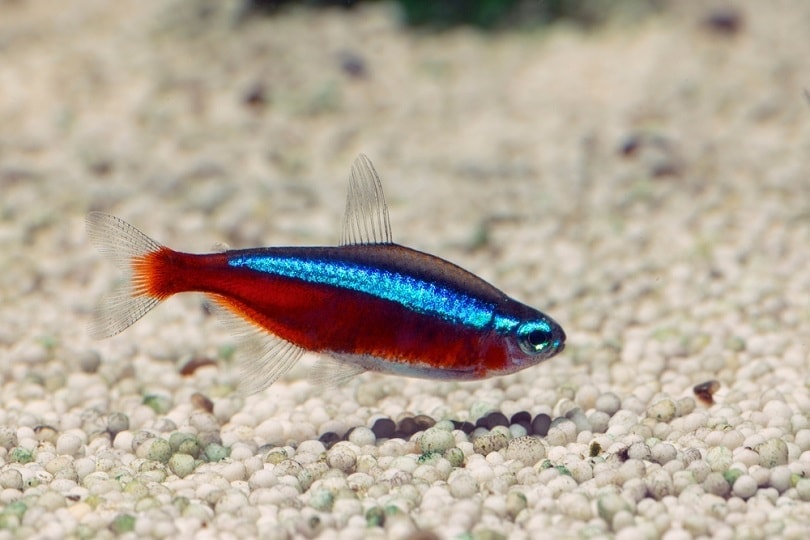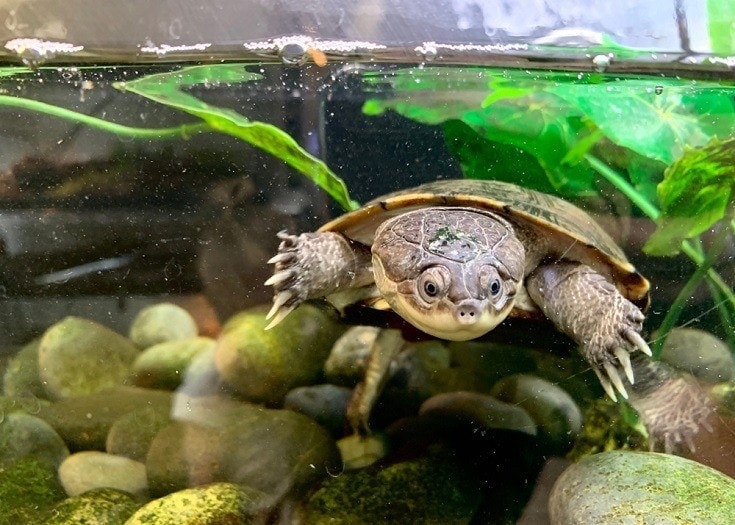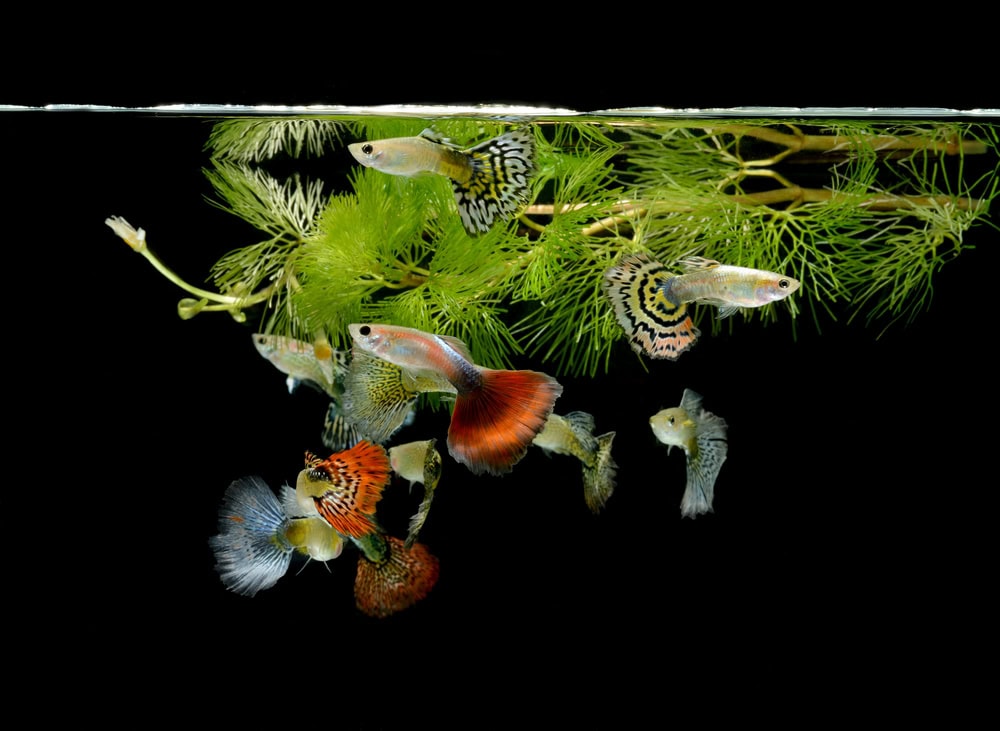Where Do Aquarium Fish Actually Come From? The Surprising Answer!
Updated on
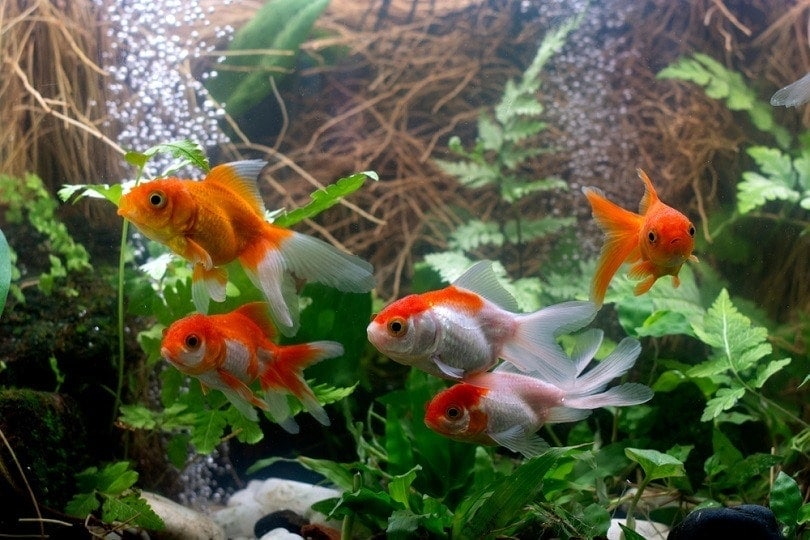
Aquarium keeping is a fun and rewarding hobby. There are few things better than the lull of a fish tank filter and the calming view of ornamental fish swimming about. Aside from the experience of owning and caring for fish, many aquarium keepers are drawn to the calming effects of an aquarium. The more you get into the aquarium hobby, the more research will lead you to the biology and science part of aquariums.
As you get deeper into fish keeping, you might start wondering how fish have made it into your aquarium and where they come from. Most of the fish we purchase for our aquariums come from pet stores or breeders, and there’s no doubt that most of them have been in captivity for generations.
So, where did these fish come from before they were sold as pets and ended up in your aquarium?
Wild-Caught Vs Captive-Bred Fish
Fish come from two different sources and can either be wild-caught or captive-bred. Fish that are wild caught have been taken from their wild habitat before being sold as pet fish. This means that the fish was not raised in captivity, and it was instead a wild fish all its life before being caught. This is mainly the case for certain types of marine fish, as it can be difficult to breed marine fish and even more difficult to breed rare species.
If a fish is captive-bred, it means that the fish was bred and raised entirely in captivity by humans, and was never in the wild. Certain fish like guppies and goldfish have been captive bred as pets through generations, as these common fish do not need to be taken from the wild because we can easily breed these fish ourselves.
According to the Ornamental Aquatic Trade Association (OATA), only around 10% of freshwater fish are wild-caught, but a whopping 90% of marine fish and invertebrates are wild-caught. Most freshwater fish are reared in captivity through aquaculture in fish breeding facilities and are then shipped to various stores where they are then sold.
The truth is that all fish species that we now enjoy in our aquariums came from the wild at some point, but most pet fish have been bred in captivity for so long that there is no shortage of these fish to cause us to take them from wild populations. Certain fish species such as goldfish have been domesticated for so long that most breeds are considered man-made, which means that you won’t find certain goldfish breeds in the wild.
However, marine species like certain clownfish are usually wild-caught.
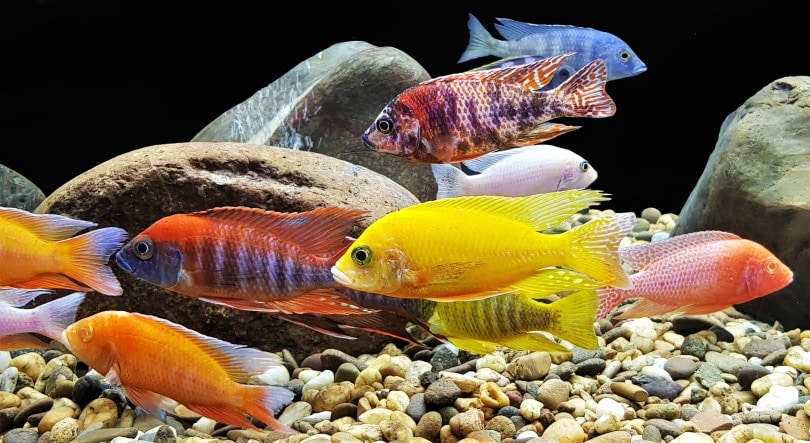
Are Captive Bred Fish The Better Option?
Captive-bred and raised fish are the better and more ethical methods for acquiring fish for the aquarium hobby. These types of fish seem to have a better temperament and less chance of developing a disease from the stressful travels from the wild into a captive environment.
Removing a fish from its wild habitat and transporting it to a pet store to then be sold into a small aquarium can be quite stressful for the fish, which is why many wild-caught fish enter the hobby with diseases. There are certain methods to obtaining wild-caught fish that are raising concerns.
Many marine fish are caught by using cyanide which is pumped into the water to make the fish more sluggish and eventually easier to catch. This is not only problematic for the fish itself but also the environment. Cyanide is a chemical that can harm the fish and even shorten their lifespan and damage the habitat where the chemical was used, such as coral reefs.
Certain equipment used to catch and remove fish from the wild can be harmful and damaging to the environment. This makes it stressful for the fish to be caught and removed from the wild, which has raised questions amongst aquarium keepers as to whether it is worth catching fish from the wild just to keep them in aquariums.
How Do Fish Get To Pet Stores?
To get to pet stores, fish either come from a breeding facility where they are mass-bred to supply pet stores and online retailers, or they are wild-caught and imported. The fish will go through a cycle before ending up in your aquarium, and it can be quite stressful for the fish. Most of the fish are imported from Indonesia and China, as these places are some of the largest fish producers in the world.
If the fish is wild caught like most marine fish, they will be captured from their habitat, usually from reefs. Most freshwater fish come from breeding facilities and have been raised in captivity.
The fish from the breeding facilities will be transported in bulk to pet stores—usually when the fish are young. They will then be unpacked from their transportation boxes and placed into the aquariums at the pet store. Some pet stores will put the new fish into a quarantine tank before putting them in display tanks ready to be sold. This is because the fish will be so stressed from the travels that the diseases they carry can affect old stock if they are not quarantined for the appropriate amount of time, which is between 14 and 28 days.
The fish are then placed into the display tanks and are ready to be bought and taken home where they will live in aquariums. If you have a wild-caught fish, you will find that they have a different temperament than a captive-bred and raised fish would. They will be more withdrawn and aggressive and even seem uneasy after being taken from their natural habitat.
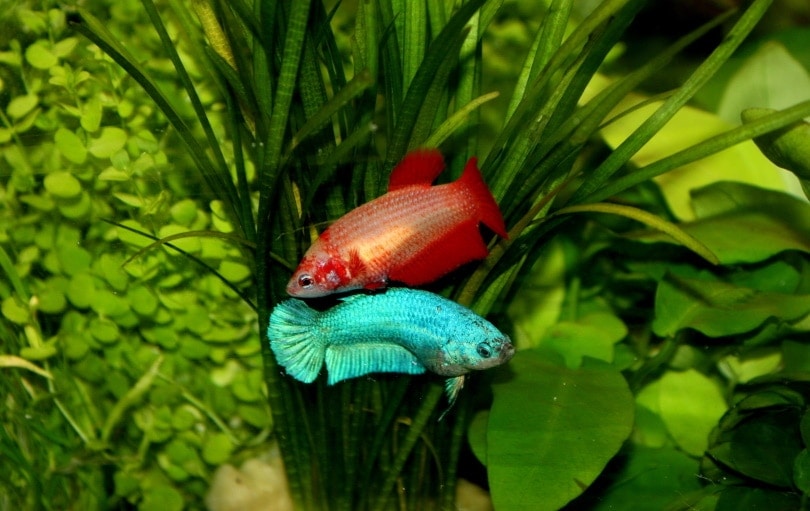
Final Thoughts
Fish in the aquarium hobby come from breeding facilities if they are captive bred, where they are transported to pet stores and sold to be kept in home aquariums. Wild-caught fish will be imported after being caught in their natural habitat, and then transported to pet stores to be sold.
Both methods of sourcing fish for aquariums can be stressful for fish, which is why new fish should be quarantined because the stress will lower their immune system and make them more susceptible to diseases they may carry.
Featured Image Credit: gunungkawi, Shutterstock


